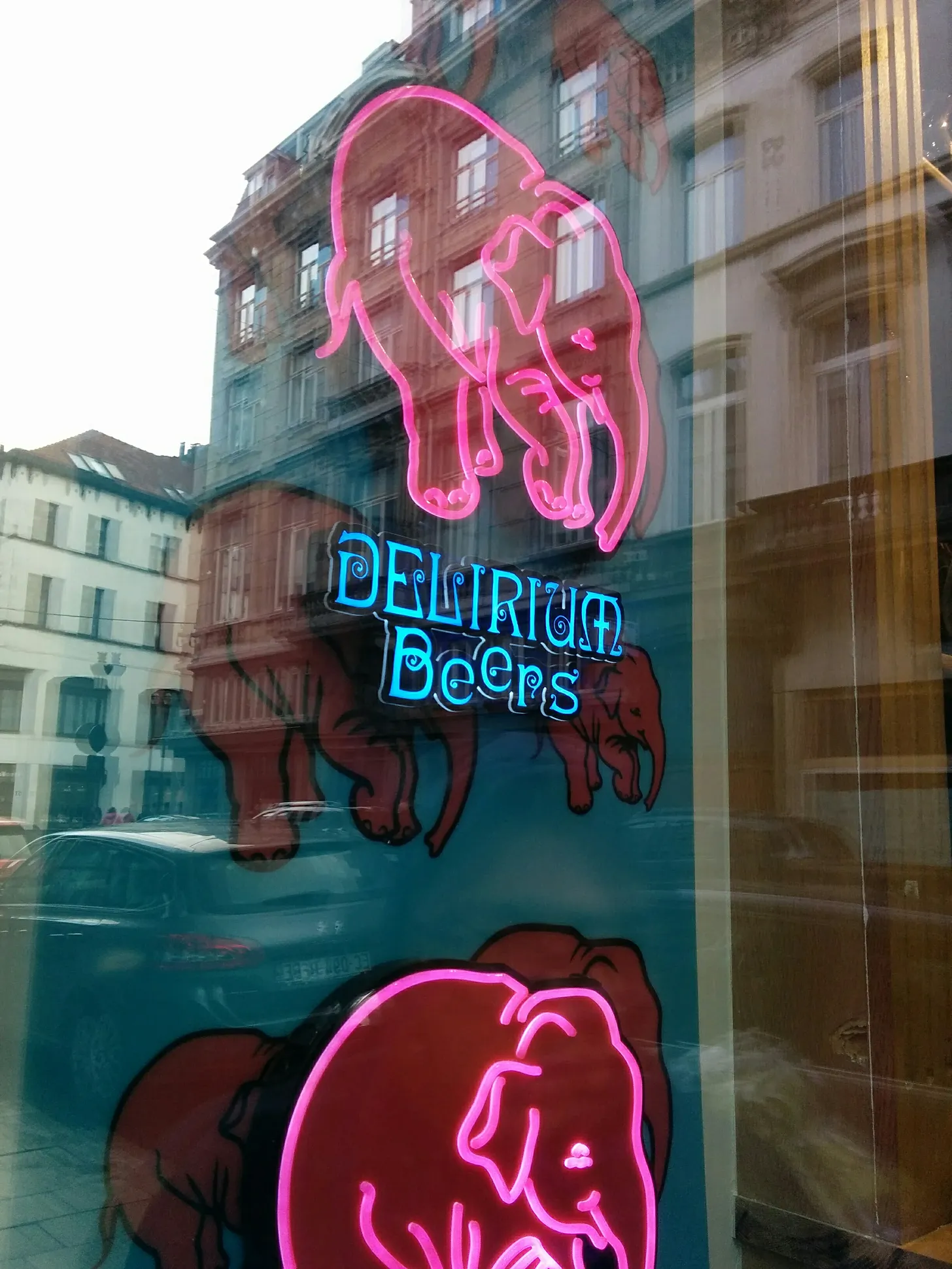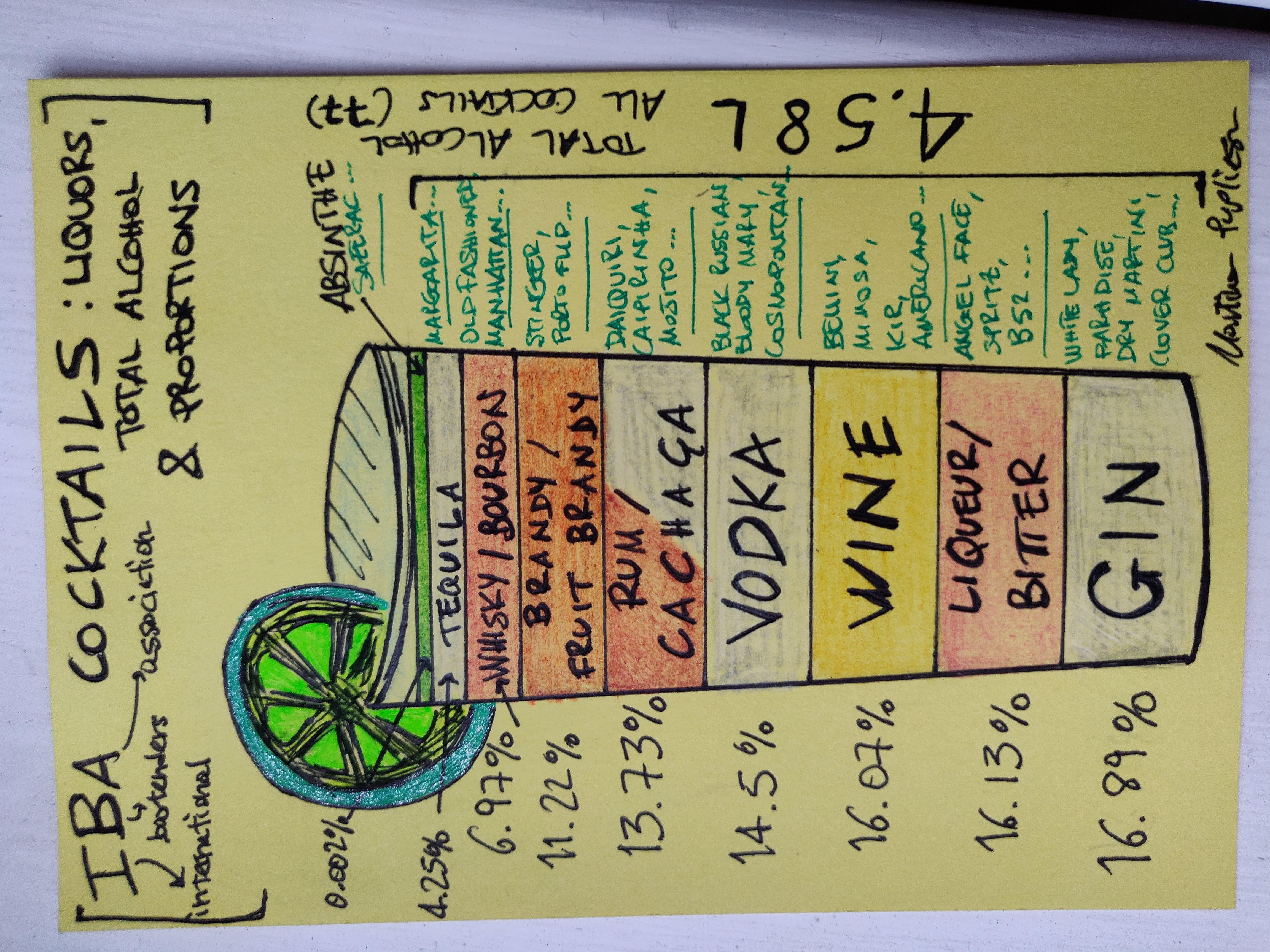Cocktails, spirits & data
Maybe you’ve been doing dry January and are now looking forward to a tipple, or maybe you’re just like me: I drink very little but are somewhat fascinated by the world of alcoholic beverages, which is rich in variety and deep in historical roots. Let’s get going.
Bring-along items
For every card, I try recommending three things that go well with the topic.
A movie
Have you also been marked forever by the “Pink Elephants on Parade“ from Dumbo? That’s when the poor little guy drinks some alcoholic beverage and starts hallucinating with creepy pink elephants that dance around. The film is from 1941, the music is beautiful and the animation is gorgeous, but I bet this sequence gave every kid the creeps since then (I wonder whether it still does, but more interestingly, I wonder whether kids still watch it today - do kids watch old Disney classics anymore?).
Continuing on the theme - in Belgium
The idea of “seeing pink elephants” when drunk (when experiencing what is called “delirium tremens”) seems to be quite old, and most likely the Disney film contributed to its popularity.

There’s a Belgian beer actually called Delirium Tremens with a pink elephant as its logo (in image above). Belgian beers are known for being high in alcohol percentage, and the “Beer culture in Belgium“ is since 2016 recognised by UNESCO as part of the Intangible Cultural Heritage of Humanity. Beer has of course an ancient history, dating back from our hunter-gatherers times - here’s a short documentary made by the BBC.
A proposal
The Irish government has put forward a proposal to put health warnings on alcoholic products (I guess similarly to what happens already for cigarettes), the EU hasn’t opposed the idea but some countries really haven’t liked it. One of those is Italy, a large wine exporter.
The Italian representative organisation for food and wine (Coldiretti), always ready to “defend made in Italy”, got so annoyed at this proposal as to call the labels “terroristic“ and the approach “ideological” - you can read their words here [Italian]. They use no data to back their claims - it’s a typical playbook and, if you allow me, the quintessence of Italian conservatism. I’m not sure about the other opposing countries.
Let’s remind ourselves that, whatever we may think of this proposal, there is no safe drinking level when it comes to alcohol, so it’s good for it to be an informed choice.
The data card
I’ve pulled the list of 77 cocktails approved by the International Bartenders Association (IBA) and had a look at the spirits that compose them. After a few manual steps of listing all the spirits and summing up the quantities in which they appear in the cocktails, I’ve produced a visualisation that shows the amount of alcohol in total across all the cocktails and the share of each spirit. Note that I’ve done this card in summer 2020 so the data may be slightly out of date now (the list of cocktails may have changed).

I’ve grouped liquors by similarity of production procedure (those extracted from the same element and processed via the same process). In order of prevalence in the set, we have:
- gin, made by distilling some grain (usually wheat or barley) and adding botanicals
- liqueurs and bitters, these include things like Campari, Triple Sec, Angostura bitters etc.
- wine, made from grapes
- vodka, made by distilling potatoes
- rum and cachaça, both made from the sugarcane, rum is a distillate of molasses and cachaça a distillate of the juice
- brandy or fruit brandy, respectively a distillate of wine and juices of fruits other than grapes
- whisky/whiskey and bourbon, made from distillates of grains (bourbon normally uses corn)
- tequila, made from agave
- absinthe, made from botanical elements
Oh, I have a newsletter (see link in navigation above), powered by Buttondown, if you want to get things like this and more in your inbox you can subscribe from here, entering your email. It’s free.